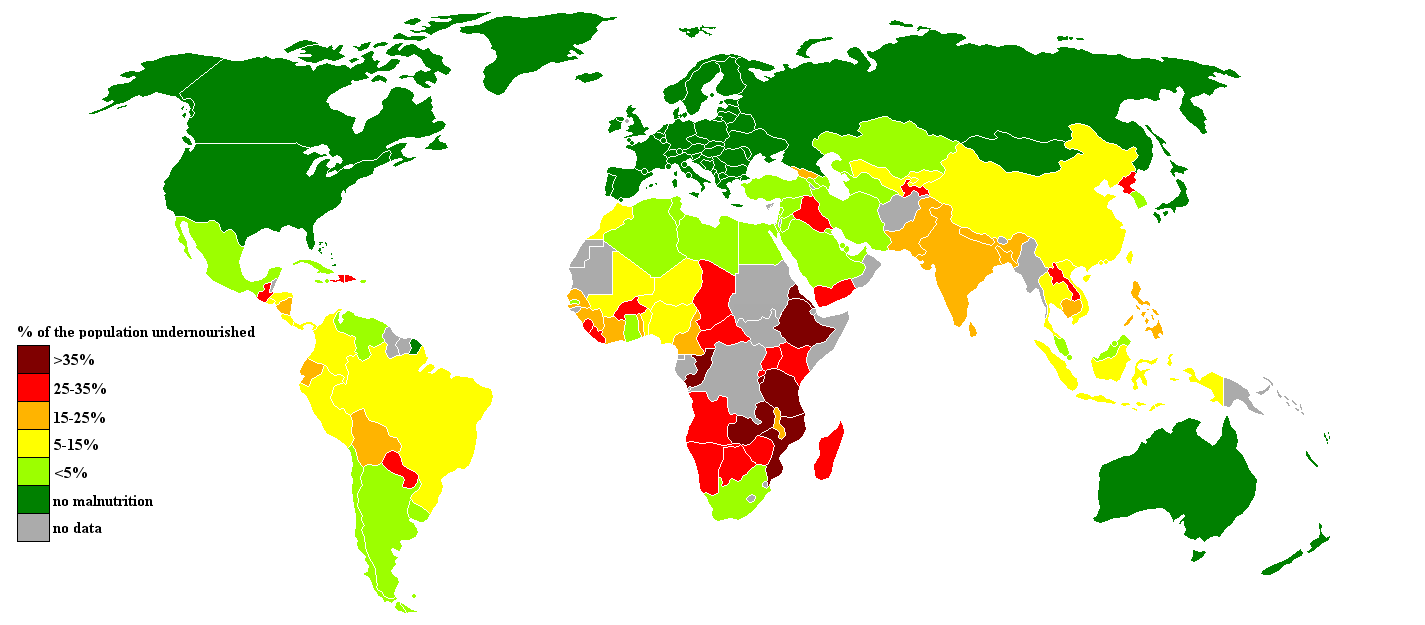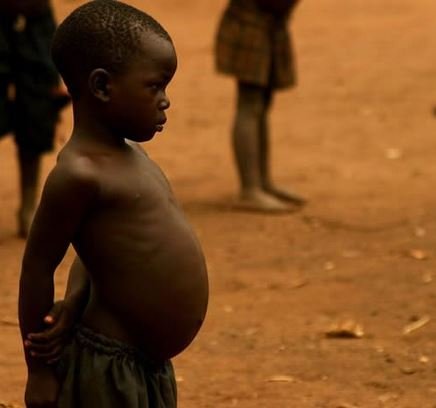About Fasting and Starvation - Human Energy Metabolism #4
With this article we reached the fourth one in my series on the Human Energy Metabolism. It will again revolve around a very specific aspect of nutritional biochemistry, namely the biochemical core processes of
Fasting and Starvation

Image Source
Although there is a huge difference between fasting and starvation - the free choice to do so - both trigger the same general processes. Keep in mind that the term starvation refers to the most extreme form of malnutrition.
During any form of fasting the human glycogen stores which are mainly located in the liver and the skeletal muscles start to deplete. This takes about 40 to 50 hours, what is concluced from trials, whose results are shown in the following illustration.
Under fasting conditions, the liver will increase its rate of gluconeogenesis. In fact, 96 % of blood glucose is derived from gluconeogenesis after circa 40 hours of fasting!
As most of you have probably heard, glyconeogenesis is a metabolic pathway responsible for converting non-carbohydrates into glucose. Recall that the brain depends on an external source of glucose. This emphasizes the importance of this process, so let's take a closer look:
As dietary glucose is not available and the liver has exhausted its supply of glycogen, the needed glucose is synthesized via the biochemical pathway depicted to the right. The starting materials are lactate and pyruvate as well as intermediates of the citric acid cycle. Also the carbon skeleton of most amino acids can be utilized. Oxaloacetate playes the central role within this anabolic pathway.
In animals, fatty acids and the amino acids leusine and lysine cannot be used to synthesize glucose because their degradation yields acetyl-CoA which in turn cannot be transformed into pyruvate or oxaloacetate. Hence the main source for gluconeogenesis in animals under these conditions are other amino acids (and glycerol from triacylglycerol) which are mainly released by proteolysis of muscle proteins!
The 'second phase' of Starvation
The breakdown of muscle protein cannot go on indefinitely as the animal would loose its ability to move about and find food. Therefore, after 4 - 5 days, liver redirects acetyl-CoA for the production of ketone bodies.
During that time also the brain adjusts to using ketone bodies as a major source of energy: after 3 days, 30 % of the energy requirements are met by ketone bodies whereas after 40 days this share reaches 70 %. Consequently, the rate of muscle breakdown slows down to ca. 25 % of the initial rate when glycogen stores are depleted. Hence the overall survival rate depends mostly on fat reserves rather than muscle mass. In fact, fat reserves typically last for roughly 3 months and up to 1 year in some individuals!
Global view on Malnutrition
Starvation is a major problem in Africa but also in parts of South and Central America and Asia. The following map gives a global overview of the distribution of undernourishment.

Global Malnutrition - Image Source
click to enlarge
Protein malnutrition is particularly problematic for young children, especially in areas of low availability of protein-containing nutrients. For this type of undernourishment two types are distinguished:
Types of protein malnutrition
Marasmus (Greek: "to waste away") results from a deficiency of protein and energy intake and leads to the overall wasting of the body. Children that are affected by this type of malnutrition lose a lot of muscle mass and fat, get dry skin and hair, are prone to get chronic diarrhea, respiratory infections and may have intellectual disability and stunted growth. Furthermore they do have little to know energy and enthusiasm for anything. Who wonders?
Kwashiorkor (from a Ghanaian language: "the disease the first child gets when the second is on the way") often occurs after weaning and is due to the chronic consumption of a diet supplying ample amounts of carbohydrates but little or no protein. This diet results in the preservation of fat stores but, unfortunately, also in a tendency to preserve the stores of amino acids, the proteins of skeletal muscle.

Image Source
The failure to mobilize muscle protein results in continued turnover of proteins that are vital to survival, such as serumalbumin and immunoglobulins (Antibodies). This leads to a gradual depletion of these essential proteins. In this form of malnutrition persistent infections occur, which eventually lead to death. Compared to marasmus the weight loss of 20-40 % is rather low and is due to edematous water retention. A mixed form in which symptoms of marasmus occur too is called the Marasmian Kwashiorkor.
Although not a pleasant topic, it is important and indeed interesting. I hope that the presented general biochemical-medical information gave you a deeper insight into this topic.
With my next article in the series on the Human Energy Metabolism, I will go to the other end of the spectrum and write about... So stay tuned! :)
Previous articles can be found here:
- Part #1 - Organ-specific Requirements
- Part #2 - The Respiratory Quotient
- Part #3 - Diabetes mellitus
mountain.phil28
References:
- A Spectrum Article on Kwashiorkor
- A Healthline Article on Marasmus
- Further information and non-direct cited images are taken from "Biochemistry I" lectures at the TU Graz.
@OriginalWorks
The @OriginalWorks bot has determined this post by @mountain.phil28 to be original material and upvoted it!
To call @OriginalWorks, simply reply to any post with @originalworks or !originalworks in your message!
fasting can be beneficial for altering hormone levels, however , always be cautious not to become starved!
This is very much true. There are indeed beneficial effects related to a temporary lowered dose of caloric/nutritional uptake. Also a onsetting autophagical process may be healthy and allows your body to restore health on a cellular level. - Thx, for your comment.
Best,
mountain.phil28
Just one clarification.
By fasting, do you mean - not eating for the whole day? or just eating raw or baked food (that is the case in orthodox christianity). But given all the data, i think it is not eating for some time.
Very nice and educational article.
Thanks :)
Thx for your comment!
You are right! I refer to Fasting as eating either nothing or having a very little caloric uptake, that does not resemble the bodies needs, also for some chosen time: body consumption > body Feed
Best,
mountain.phil28
Infotmative post bro, keep it up..
Good post
"The breakdown of muscle protein cannot go on indefinitely as the animal would loose its ability to move about and find food"
... or breath, or filter blood, or perform any of the numerous hepatic functions, etc., etc.